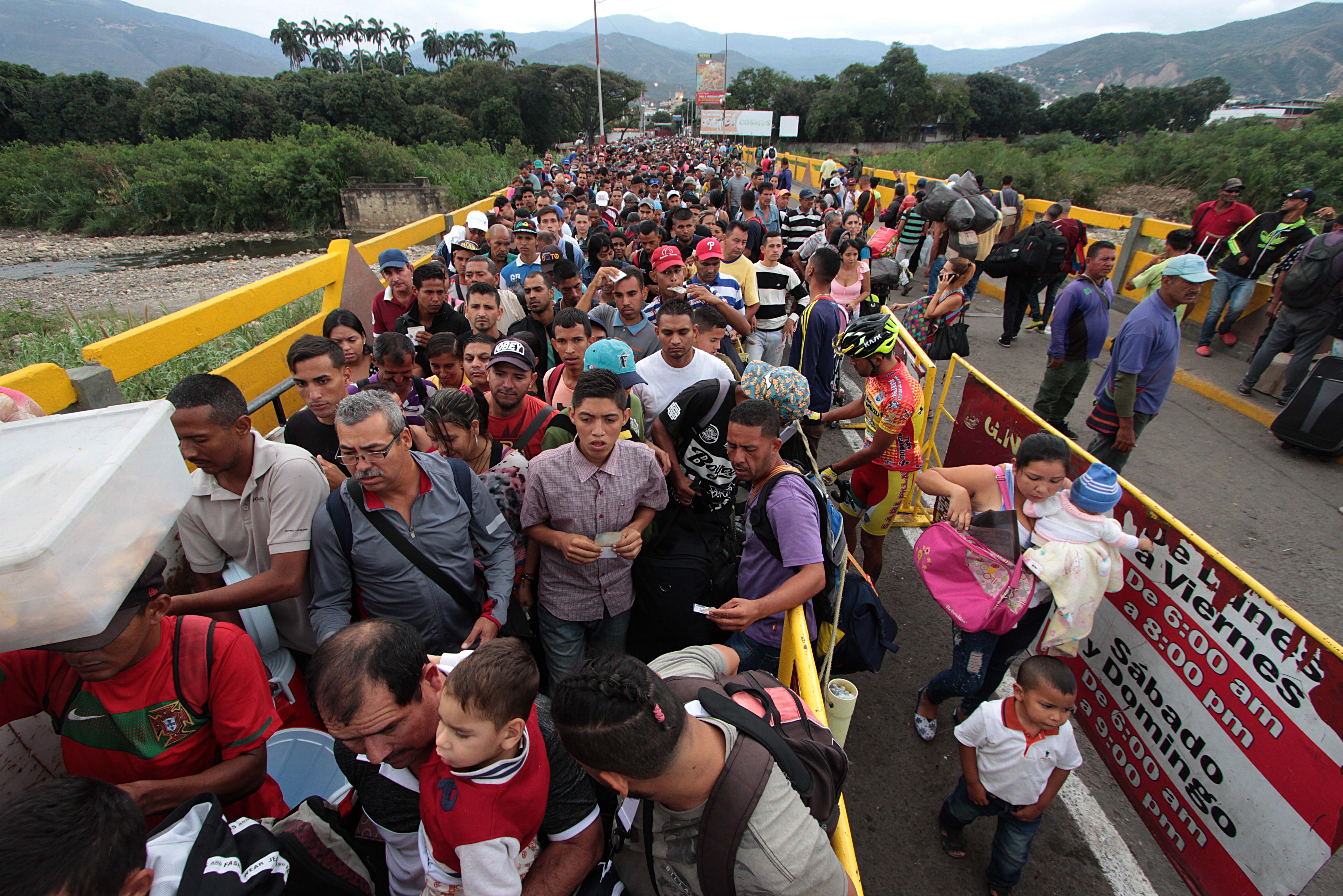A weekly newsletter for Pacific Standard Premium members.

Your Five Essential Reads
A rundown of five of our most important and timely stories from the past week.
- Al Gore has been at the vanguard of the fight against climate change for decades, and he’s still at it. This past week, the former vice president was in Los Angeles for a summit hosted by the non-profit Climate Reality Project. Staff writer Kate Wheeling managed to catch up with Gore to talk about climate messaging, Trump’s failures on climate, and what we can do to combat global warming. Read Wheeling’s interview here.
- In 2015, a quarter of all murdered Canadian women were indigenous despite only making up lass than 5 percent of the total population. And the problem isn’t confined to Canada, as contributing writer Terese Marie Mailhot discusses in her stirring essay about the continued disappearances of native women, violence against this vulnerable group is a scourge across North America, and not enough is being done to stop it. Read Mailhot’s essay here.
- An odd, but understandable, viral trend resulted from the Trump administration’s stringent policy of family separations at the border: Videos of families being reunited were spread across social media and television. Kathi Valeii talked to experts who note that the long-term trauma suffered as a result of these separations is evident even in these short videos. Read Valeii’s story here.
- Worries about how a notoriously climate change-skeptical White House will influence national-level climate assessments have put more pressure on local and state-level scientists to produce reports and actionable plans as the effects of a warming planet become more apparent. Staff writer Francie Diep spoke with scientists from Florida, California, and Montana about the growing importance of state-level assessments. Read Diep’s story here.
- A unique school improvement model that focuses on students’ strengths and teachers’ relationship with the classroom has generated consistent improvement in schools of all kinds, all across the country. But you’ve probably never heard of it. Tara García Mathewson reports on this innovative, and effective, program. Read Mathewson’s story here.

(Photo: George Castellanos/AFP/Getty Images)
Dispatches: South America’s Migrant Crisis
News and notes from Pacific Standard staff and contributors.
As Venezuelans leave their collapsing home country in greater and greater numbers, experts warn that the current migrant crisis in South America is on track to rival the refugee crisis that rocked Europe in 2015. Recent United Nations reports estimate that over 2.3 million Venezuelans have left the country. Brazil, the country’s southern neighbor, has accepted tens of thousands of these migrants.
While many Venezuelans have applied and received asylum in Brazil and other South American countries, the U.N. has yet to declare the fleeing Venezuelans refugees. Dany Bahar, an expert in the global economy and development at the Brookings Institution, says that the international community needs to wake up, and call the crisis what is is.
“There’s no other description for [the Venezuelans fleeing] besides refugees,” Bahar says. “For any economic indicator that you look at in Venezuela, it looks like a country in war: no access to basic medicine, lack of food, people dying from preventable diseases.” Economic breakdown has seen hyperinflation rise to over 8,300 percent in Venezuela. Basic necessities—food, diapers, insulin medication—are unavailable to many.
Just as the Syrian refugee crisis tested European countries’ tolerance for foreigners, the Venezuelan exodus has strained many of its surrounding nations. However, despite tensions in some border towns, Bahar says that South American countries—both people and governments—have been impressively accepting of Venezuelan migrants.
For instance, even as violence flared up on its border this month, the Brazilian government announced its intention to keep the border open. Ecuador opened “humanitarian corridors” and provided buses to Venezuelan migrants traveling through the country to seek asylum in Peru. José Alberto Duarte Garcia, a former resident of Caracas who fled to Brazil, says that his own transition has been smooth. Even though he’s seen videos of Venezuelans being attacked in some border towns, Duarte says that, “For my part, I haven’t been mistreated by the Brazilians.”
Bahar says that most of the Latin American nations Venezuelans end up in are developing countries, and, as a result, government resources can be scarce. That is then putting enormous pressure on institutions like hospitals and schools. This is partly because integrating migrants at such a level is unprecedented in most Latin American countries. There is one historic exception, however: Venezuela. Ironically, in the last few decades, Venezuela accepted more migrants than any other South American country.
While many people fleeing dictatorships in countries like Chile and Argentina found refuge in Venezuela, the greatest number of migrants and refugees came from Colombia, where people escaped brutal sectarian violence by crossing the border into the once-prosperous nation to the east. Now, as people flee the other direction across the border, Colombia has done more than any other nation to aid Venezuelans. The country has accepted the majority of migrants: U.N. estimates put the number at 600,000 people, but the actual number could be well over one million. Colombia has also gone a long way to aid migrants within its borders: As Bahar explains, the government granted work permits to hundreds of thousands of Venezuelans who had entered the country illegally.
Even as nations like Colombia offer a sort of Latin American solidarity to Venezuelans, Bahar says that the onus is now on the larger international community to help stem the pain: “There is a lot of capacity from the international community to pledge significantly more money,” he says. “But that will require other countries to face this as what it is: a refugee crisis.”
—Jack Herrera, Editorial Fellow
PS Picks
PS Picks is a selection of the best things that the magazine’s staff and contributors are reading, watching, or otherwise paying attention to in the worlds of art, politics, and culture.

BLK MKT Vintage: Antiquing, once a pastime reserved almost exclusively for the rich and leisured, is becoming increasingly democratized online—it’s never been easier to find mid-century modern furniture, Hollywood Regency decor, or pop-culture ephemera from the 1970s. One such purveyor of vintage goods is BLK MKT Vintage, whose founders, Jannah Handy and Kiyanna Stewart, curate a selection of cultural artifacts related to black history and life that they offer for sale on Instagram, and, soon, in a brick-and-mortar space.
“Whiteness as default is a ubiquitous concept, but it’s such an odd experience going into spaces that are devoted to antiquity, to our past, and you’re not expressly represented in any of it. It’s nostalgic dissonance, if you will,” Handy and Stewart told HuffPost in a 2017 interview. They aim to challenge this dissonance while bringing a love of antiques to a new audience. A scroll through their wares online makes it easy to believe in their mission: Objects recently on offer include a 1970 issue of Ebony magazine, a rare first edition of Zora Neale Hurston’s Tell My Horse, and a beaded South African fertility doll.
—Angela Serratore, Contributing writer
PS in the News
A look at where our stories and staff surface in the national conversation.
- Lori Lou Freshwater’s personal reporting on the toxic chemicals that she and her family consumed while living near Camp Lejeune in North Carolina was shared by Longform, Longreads, and Task & Purpose.
- The Food and Environment Reporting Network included Rhett A. Butler’s write-up of a study that shows that we actually have more trees now than we did 35 years ago in its Friday Feed newsletter.
- The Solutions Journalism Network shared Britni De La Cretaz’s story about rehab high schools that help teenagers who struggle with addiction.
The Conversation
What Happened at Camp Lejeune (PSmag.com, August 21st)
- Hi, I was at Camp Lejeune during 1983–1985. I have had cancer on my mouth at least eight to 10 times since 2000. The last time I had to have reconstruction surgery so I could have a bottom lip. The Department of Veterans Affairs just rejected me because I make more than $39,000.00 a year. I am now going through the process of proving what caused the cancers. By the way, it took 21 shots of pain killer while I was awake for the cancer removal and reconstruction of my lower lip. My oldest daughter was diagnosed with multiple sclerosis in August of last year and now I wonder if I caused that? —Neil Boucher
- My husband and I were stationed at Castle AFB in Merced, California, for five years. The water there was also contaminated with TCE. I had miscarriages and he became ill with histiocytic lymphoma while stationed there. Several people we knew were diagnosed with various cancers while stationed there. Also, a lot of infertility. The base is now closed and is a Superfund site. Too bad the federal government doesn’t really care about the people. If they did they would do everything in their power to help, be truthful, and not cover it all up. —Heidi
- 1975–1979, largely at Lejeune. No disease so far, knock on wood. What irks me most of all is how we prided ourselves on being part of a warrior group with a code of honor. Protect the innocent, defend the country, rely on your fellow Marines. Then to find out that the leadership of the United States Marine Corps knew about the toxic stew, and had been covering it up for years makes me ill. I used to be proud to be a Marine. I’m not so sure anymore. —Chris McKenna
How the Identity Politics Argument Affects a Party’s Choices (PSmag.com, August 27th)
- Interesting, but not entirely surprising that voters responded to a one-sided message. Curious how an opposing (e.g. “need to mobilize the Obama coalition”) message, or the two messages together would fare. —Kevin Collins
A Journey Through Contested Lands (August 2018)
- This is absolutely stunning journalism by Pacific Standard. —Kristin Scharkey
If you have any thoughts about this newsletter or our work—what you like/didn’t like/want to see more of—you can reach us at premium@psmag.com. If you’re not already, become a premium member by following the button below. As we continue to build out the benefits of a premium membership to Pacific Standard, we want to hear what would be most valuable to you.





